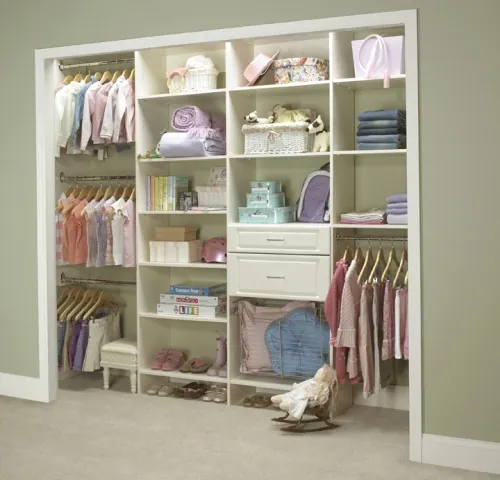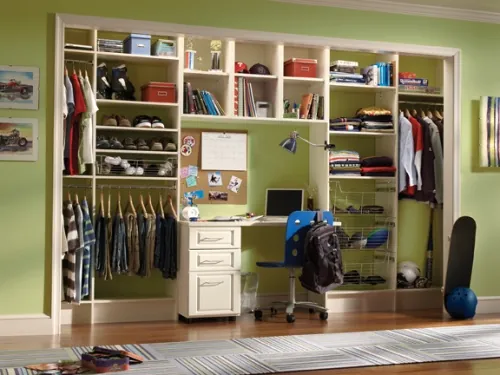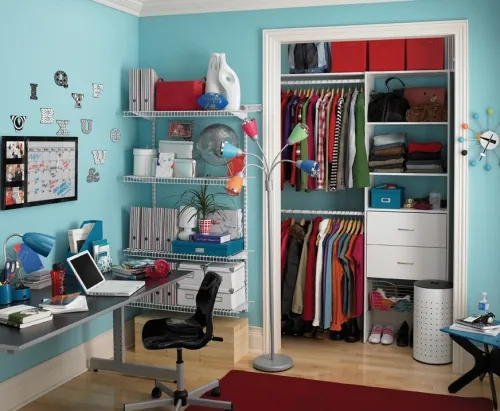 by Jennifer Jones
by Jennifer Jones
When it comes to parents and their children, the oft-repeated phrase "Clean your room!" is a frustrating one for both parties.

Photo courtesy of ClosetMaid
Most often, the room itself may not need cleaning- it simply lacks organization to keep it tidy. By taking the time to create an organization system that works for children and parents, the battle of the bedroom could be something of the past!
First, it is important for parents to take a different look. Get down at your child’s level and really look around the room. Is clothing kept on the floor because it is simply to diffuclt for your child to hang it properly? Honestly, does it need to be hung up anyway? Small children can find it taxing to struggle with a hanger and often pull things down that they do not intend to. One solution to such a problem is double rods. A top rod can house clothes that are out of season or too nice to be handled regularly by children while a bottom rod can store regularly used items. Truthfully, very little of children’s clothing needs to be hung up, so more of the closet space should be designated for shelves and baskets.

Photo courtesy of ClosetMaid
As children struggle with hangers, they often have issues with drawers too. Adult storage systems are not made with children’s hands in mind. Drawers stick, clothing gets caught, and it is far too easy to get piles of folded laundry rumpled. Instead, use baskets to contain smaller items that may have once resided in drawers.

Photo courtesy of ClosetMaid
Baskets that contain toys, socks, and other items that need corralling can sit tidily on shelving units. Another good use for shelves is in the battle against morning madness. A five cubical shelf can be set aside to store the week's clothing choices. Each cubical can be labeled with a weekday and parents and children can take time over the weekend to pick out clothing for each day and place it in the appropriate shelf. Having the next day's clothing ready keeps children from unnecessarily going through organized laundry and keeps mornings rolling smoothly. If planning for the week is not realistic for your family, perhaps one shelf or a hook can be designated for the next day’s clothing to be chosen each evening. Planning ahead can do wonders for keeping things neat.

Photo courtesy of ClosetMaid
While children often have quite a bit of clothing, their closets are usually run over by something else entirely – the toys. Often times, these are not large toys easily set on a shelf until the next play time, but rather, small items in great numbers that threaten to overtake the entire bedroom. Take the time to sort through your children's toys and organize them into groups. Then give each grouping a labeled container. It could be a plastic container with a lid or a basket that belongs on a shelf. Even an over the door system with multiple pockets may be best for keeping everything in one spot. Make labels for the containers easy to read. Even children too young to read can recognize pictures. A picture of a doll may mean that all the dolls accessories belong in that container. Work with your children; they may think of something you do not. If they have a part in setting up the organization, they are much more likely to keep it up.

Photo courtesy of ClosetMaid
One last thing to remember about your children's closet – it is not about the rest of the house. No one else sees it! Baskets, labels, bright colors, even curtains instead of doors- whatever system works for you and your children is the system to use. Even if the neon green bins are not reflective of your own style. Continue looking at the system from your children's point of view and be flexible. As your children grow, so will the organization methods!
Here are some related articles:
Save this article to:
back to top